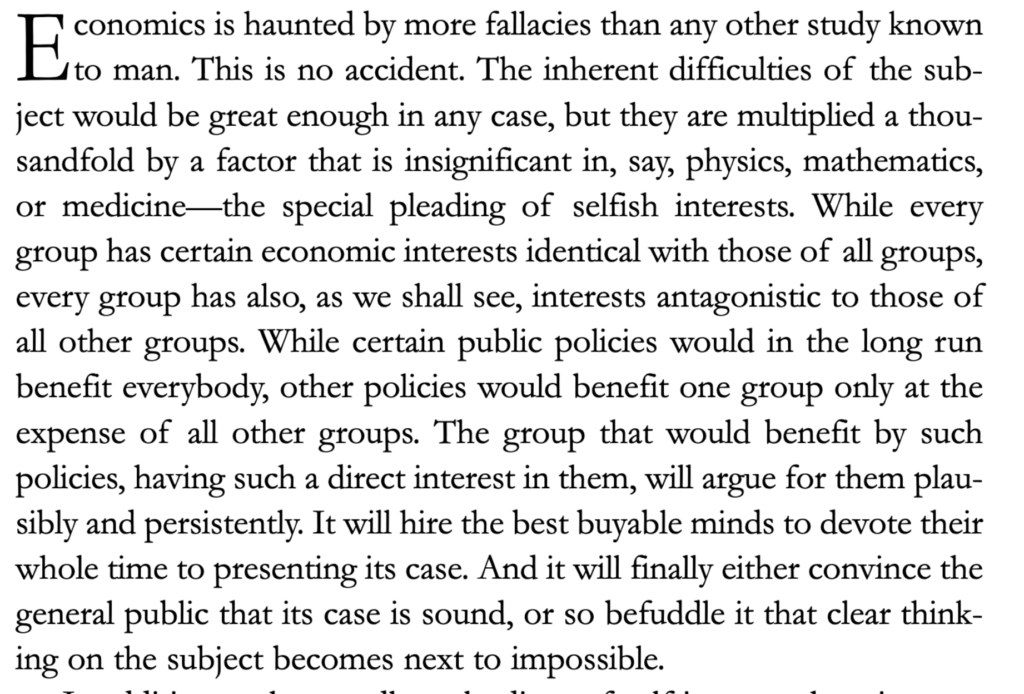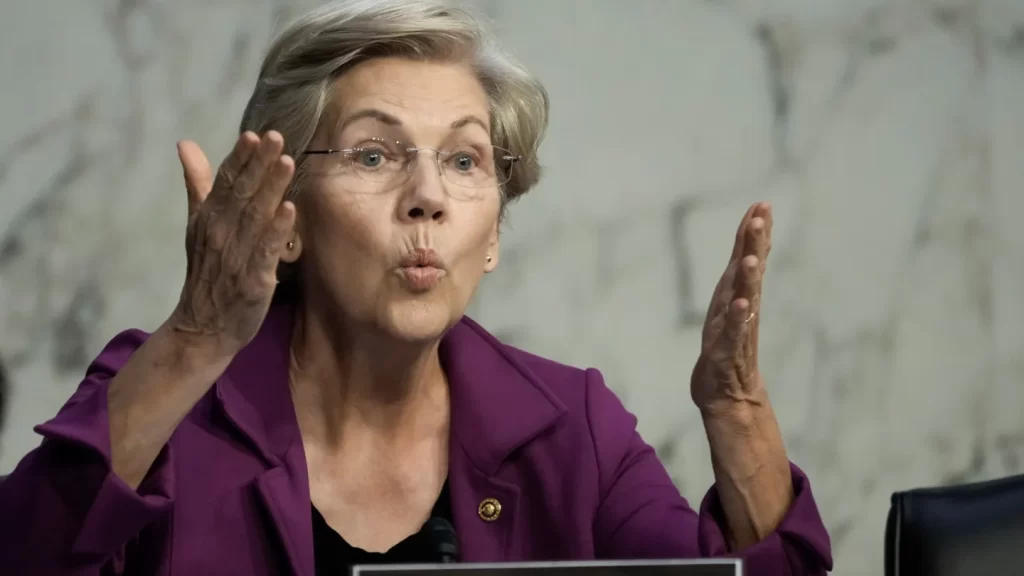As we learn more and more about Silicon Valley Bank, the basic problems are not really in doubt, but political posturing makes understanding really difficult. Henry Hazlitt has a nice quote in the 1st paragraph of his Economics in One Lesson that is apropos.

Obviously the interest group of the affected bankers and depositors quickly come to mind. But let’s not forget one of the most important interest groups–the politicians themselves. Their quest to make any issue something for partisan advantage also distorts understanding.

Elizabeth Warren is way out front to promote the narrative that this is a failure of the Trump Administration and his deregulatory agenda. Why might Elizabeth Warren personally and professionally benefit from the adoption of that narrative? I’ll leave that to you Bereans to contemplate, but let’s press on. Let’s consider the implications of the claim that Trump caused this. The basic assertion is that Mr. Trump’s changing Dodd-Frank to take the threshold of Systemically Important Financial Institution (SIFI) from $250B down to $50B allowed many mid-sized banks to now escape the eyes of regulators. If we had kept the higher threshold in place, this wouldn’t have happened, or so the story goes. But are we really prepared to say that the only regulation that can stop banks from making grotesquely bad choices is to label them a SIFI? Is it really true that the voluminous regulatory actions in the financial industry are totally worthless to catch even the most obvious of problems? Do Democrats really want to say that? After all, this was an issue that most anybody that looked closely at their balance sheet should have seen coming, given the Fed’s pivot to sharply higher interest rates, given the fact that SVB had over 50% of their assets in long-term bonds bought at bubble highs. Why did not the standard regulatory process capture this? Indeed, Ms. Warren herself is now asking this question as well. And she should. Today we see that the Federal Reserve as far back as 2019 was scolding SVB for their poor risk management, suggesting that they were on it. Why was no action taken? Is it because the San Fransisco Fed was their primary regulator and SVB’s CEO was on the SF Fed’s board? Why is that when regulators fail to do their job the call is always for more regulation? Under what basis should we believe that more of the same is going to solve this problem?
There is a simple regulation that can solve all these problems, but the banks will not submit, following Hazlitt’s dictum above, and the politicians won’t go there. There should be sharply higher capital requirements for all financial institutions that have deposits–with enough skin in the game there will be markedly better performance. We raised capital requirements after the last financial crisis, but only marginally (~10%). There is no reason for a number approaching 30-40% as appropriate. Indeed, before government regulation and the FDIC backstop, markets routinely had ~40% capital in play to convince depositors that their bank was safe (back in the 19th century). But politicians would much more rather tell banks what to do (regulate their behavior) rather than give them an incentive to do the right thing (regulate their incentives). History has demonstrably shown the former doesn’t work, and it likewise has shown that the latter is the normal result absent government backstops.
But should you fear your own bank failing? Are there more shoes to drop? First, unless you are a depositor with over $250k in one bank, FDIC covers you. If you have more than that amount, then you should be asking more questions about your bank. But here is the important point. I’ll make it a quote, even though it’s from me:
When a bank run such as at Silicon Valley Bank ends in a failure, the bank run itself can never cause the failure, rather the bank run reveals the failure that was already there.
In banking parlance, an illiquid institution (resulting from a mismatch between liabilities and assets) is not the same as an insolvent institution. Silicon Valley Bank had access to the Fed’s discount window and there is no reason why the Fed couldn’t have extended liquidity, if their liabilities were less than the value of their assets. In this case, the market price of their assets was less than their deposit liabilities. In other words, the fall in the value of their assets had already depleted their capital (meaning they were bankrupt) before the run even started. The run simply necessitated the recognition of the underlying economic reality. Sure the bank hoped that the Fed would stop, and even begin cutting rates (which would have raised their asset values) and hopefully they could turn it around. But once the Fed raised rates as much as they did, they were already bankrupt. So could SVB have spillover effects in the rest of the banking system? Not really, and certainly the run on SVB doesn’t make any other healthy bank susceptible to fail from a bank run, which is why the federal government’s decision to bail out large depositors is so dubious. Remember, any run is a liquidity issue that can easily be met by the Federal Reserve as lender of last resort. The only reason your bank could fail is not from a run, but from the fact that they are already dead. And very, very few banks would be nearly so poorly run as we’ve seen from SVB (risk management virtually non-existent, little diversification of assets or liabilities).
Which brings us back to the post from last week. It’s really hard for the government to spend $7T in new debt and have the Fed expand their balance sheet by $5T, and create a rip-roaring inflation, and expect there won’t be some collateral damage downstream. Most of what you’re hearing beyond that fact is muddying the waters and an attempt to obfuscate the issue a la Hazlitt’s quote.
 Bert Wheeler
Bert Wheeler
 Jeff Haymond
Jeff Haymond
 Marc Clauson
Marc Clauson
 Mark Caleb Smith
Mark Caleb Smith
 Tom Mach
Tom Mach